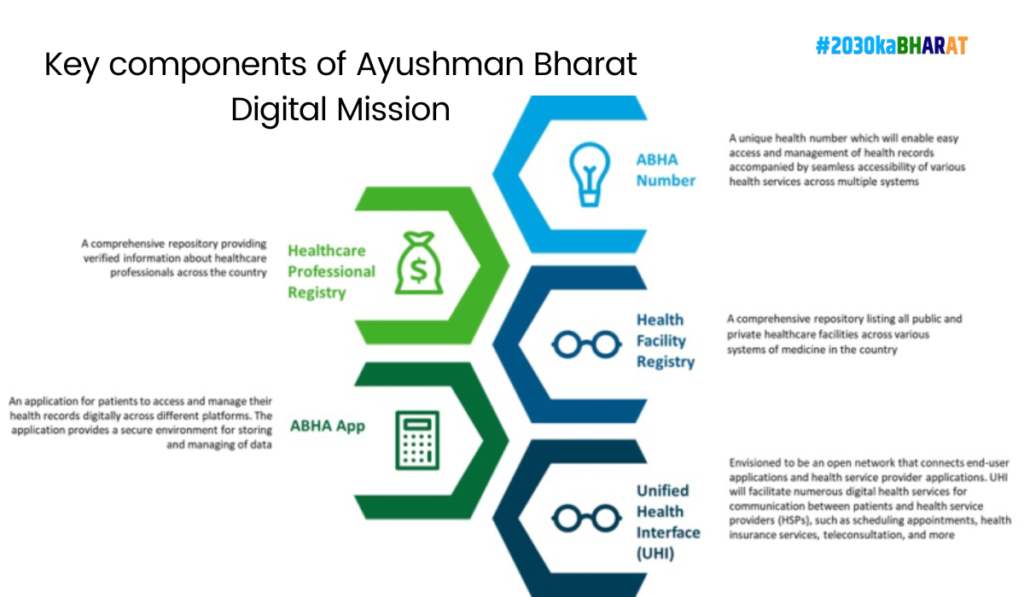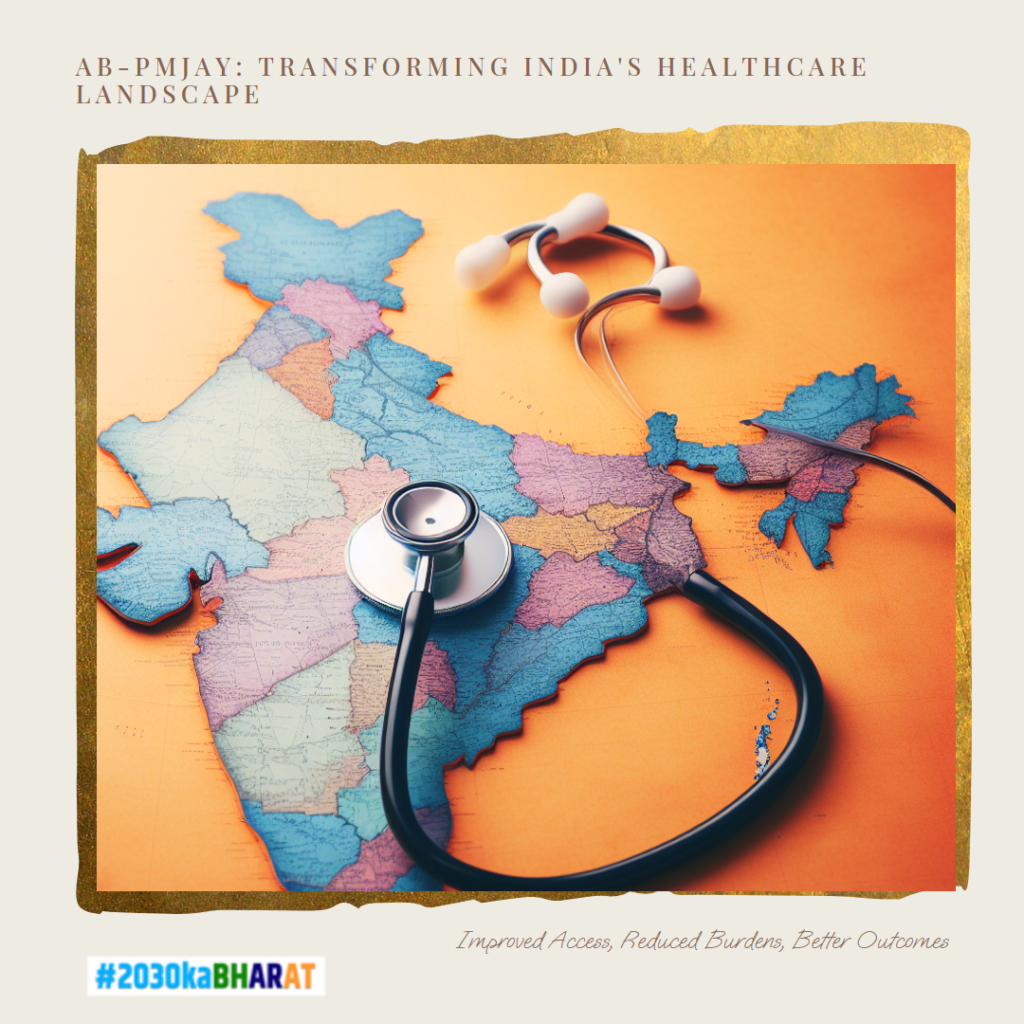In a nation as diverse and populous as India, ensuring good health and well-being for all (SDG 3) has always been a monumental challenge. The Ayushman Bharat Pradhan Mantri Jan Arogya Yojana (AB-PMJAY), launched in 2018, stands as a beacon of hope, aiming to transform India’s healthcare landscape and bring quality medical care within reach of the most vulnerable sections of society. This article delves into the transformative potential of AB-PMJAY, analyzing its impact on Universal Health Coverage (UHC), preventive and primary healthcare, and access to specialized care, all within the framework of India’s commitment to achieving SDG 3.
Universal Health Coverage: Expanding Access and Reducing Financial Burdens
Prior to AB-PMJAY, millions of Indians faced the crippling burden of out-of-pocket healthcare expenditure, often pushing them into poverty due to catastrophic illnesses. The scheme, the world’s largest health insurance program, has revolutionized access to healthcare for over 500 million beneficiaries, constituting nearly 40% of the population. This drastic expansion of UHC has been instrumental in reducing out-of-pocket expenditure by 64% for hospitalized patients, according to a 2021 NITI Aayog report. The World Bank notes that AB-PMJAY has contributed to a 1.5 percentage point decline in poverty between 2017 and 2019, highlighting its role in breaking the vicious cycle of poverty and ill-health.
However, challenges remain in achieving complete UHC. Concerns regarding awareness and enrollment persist, particularly in rural areas. Additionally, the scheme’s package coverage needs continuous evaluation and potential expansion to ensure comprehensive care for all beneficiaries. Addressing these gaps through targeted outreach programs, simplified enrollment processes, and regular package updates will be crucial in solidifying AB-PMJAY’s role as a true driver of UHC in India.

Investing in Prevention: Strengthening Primary Healthcare and Improving Maternal and Child Health
AB-PMJAY goes beyond merely providing insurance; it actively invests in strengthening primary healthcare infrastructure, the cornerstone of preventive care. The scheme has revitalized Primary Health Centres (PHCs) across the country, equipping them with essential medicines, diagnostics, and trained personnel. This focus on prevention has yielded significant results. A 2021 study by the Indian Council of Medical Research (ICMR) found a 15% reduction in infant mortality rates in districts with high AB-PMJAY penetration. Maternal healthcare has also seen a boost, with increased institutional deliveries and antenatal care utilization.
The scheme’s emphasis on immunization programs has further bolstered India’s fight against infectious diseases. According to the World Health Organization (WHO), India achieved 93% coverage for the third dose of the DPT vaccine in 2021, a testament to the program’s effectiveness. These successes in preventive and primary healthcare lay the foundation for a healthier future for generations to come.
Bridging the Gap: Enhancing Access to Specialized Care
AB-PMJAY not only covers primary care but also provides access to specialized medical services for serious illnesses and surgeries. This has been a game-changer for millions who previously lacked the means for such treatment. The scheme empanels hospitals across the country, ensuring a wider network for beneficiaries to access advanced care. A 2020 study by the National Sample Survey Office (NSSO) found that over 60% of AB-PMJAY beneficiaries reported receiving quality treatment at empanelled hospitals.
However, challenges remain in ensuring equitable access to specialized care across regions and income groups. There are concerns regarding the availability of quality specialists, particularly in rural areas, and the potential for hidden costs or denial of services by some empanelled hospitals. Strengthening referral systems, expanding the network of empanelled hospitals, and implementing stricter quality control measures are crucial steps towards ensuring that everyone can benefit from AB-PMJAY’s coverage of specialized care.
Challenges and Sustainability: Ensuring Long-Term Success
AB-PMJAY’s ambitious goals require robust financing mechanisms and effective implementation strategies. The scheme faces the challenge of balancing affordability with comprehensive coverage. While the government has increased budgetary allocations, exploring alternative financing models, such as public-private partnerships, might be necessary for long-term sustainability. Furthermore, strengthening monitoring and evaluation systems is crucial for identifying and addressing gaps in implementation, ensuring transparency, and preventing fraud.
A Brighter Future: Continued Efforts and the Call to Action
Although challenges remain, AB-PMJAY’s impact on India’s journey towards SDG 3 good health and well-being is undeniable. The scheme has expanded access to healthcare, reduced financial burdens, and improved health outcomes for millions. By addressing existing challenges, ensuring sustainable financing, and continuously improving implementation, AB-PMJAY has the potential to be a truly transformative force in transforming India’s healthcare landscape. To fully realize this potential, continued efforts are needed on several fronts:

- Strengthening primary healthcare: Investing in infrastructure, personnel, and training at PHCs is crucial to ensure quality preventive care and early intervention for chronic diseases.
- Bridging the digital divide: Utilizing technology to raise awareness, improve enrollment processes, and facilitate telemedicine services can bridge the gap in access to healthcare, particularly in rural areas.
- Empowering communities: Engaging communities in health education, disease prevention campaigns, and monitoring scheme implementation can foster ownership and accountability.
- Promoting private sector participation: Encouraging private hospitals and healthcare providers to participate in the scheme while ensuring quality control and affordability can expand the network and improve service delivery.
- Addressing gender disparities: Ensuring equitable access to healthcare for women and girls through targeted interventions and awareness campaigns is vital for achieving SDG 5 (Gender Equality).
The success of AB-PMJAY requires a collective effort from the government, healthcare providers, civil society organizations, and the community. Each stakeholder has a role to play in advocating for the scheme, ensuring its effective implementation, and holding it accountable for its promises.
Conclusion: A Beacon of Hope for a Healthier India
Ayushman Bharat Pradhan Mantri Jan Arogya Yojana stands as a beacon of hope in India’s pursuit of SDG 3 good health and well being. Its transformative impact on access to healthcare, financial protection, and health outcomes has already improved the lives of millions. By addressing existing challenges, embracing innovation, and fostering a collaborative spirit, AB-PMJAY can pave the way for a healthier and more equitable future for all Indians. Let us continue to nurture this beacon of hope and work together to build a healthcare system that truly serves the needs of every citizen, leaving no one behind in the journey towards a healthier and more prosperous India.
Resources